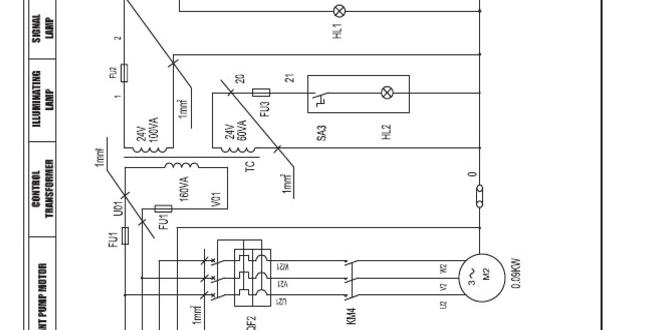A 1/8 inch carbide end mill is your secret weapon against tool steel deflection. It offers the rigidity and sharpness needed to cut tough materials cleanly, preventing chatter and improving accuracy in your milling projects.
Ever tried to mill a piece of tough tool steel, only to have your tool chatter and wander? It’s frustrating, right? That’s often because the milling tool isn’t suited for the job. When you’re working with harder materials, the slightest flex in your end mill or workpiece can throw your cuts way off. This blog post is all about a simple, yet incredibly effective, solution: using a 1/8 inch carbide end mill specifically designed for these tough jobs. We’ll dive into why these small but mighty tools are so good at tackling tool steel and how they can save your project from deflection woes. Get ready to mill with confidence!
Why Tool Steel is a Milling Challenge
Tool steel is a fantastic material for creating durable tools, molds, and dies because it’s designed to be hard and retain its shape even under stress. However, these very qualities make it a real challenge to machine. Unlike softer metals, tool steel resists cutting. This means your milling cutter has to work much harder, putting more force on both the tool and the workpiece.
When a standard end mill struggles with the cutting forces required for tool steel, it can start to flex or “deflect.” This deflection causes the cutter to deviate from its intended path. For a beginner, this often leads to:
- Rough surface finishes
- Inaccurate dimensions
- Excessive vibration or “chatter”
- Tool breakage
- Damage to the workpiece
The smaller the diameter of your end mill, the more pronounced this deflection can become. This is where specialized end mills, like a 1/8 inch carbide end mill designed for tool steel, become invaluable. They bring a combination of properties that fight back against these challenges.
Introducing the 1/8 Inch Carbide End Mill: A Tiny Titan
You might be thinking, “How can such a small tool make a big difference?” The answer lies in the material and design of a high-quality carbide end mill. Let’s break down why a 1/8 inch (or 3mm, as it’s often measured in metric) carbide end mill is often the go-to for challenging materials like tool steel.
The Magic of Carbide
Carbide, or tungsten carbide, is a compound that’s incredibly hard and stiff. It’s much harder than High-Speed Steel (HSS), the material many standard end mills are made from. This hardness means carbide tools can:
- Cut harder materials without dulling quickly.
- Cut at higher speeds, reducing machining time.
- Maintain a sharp cutting edge.
Because carbide is so stiff, it resists bending much better than HSS. This rigidity is crucial when you’re trying to maintain accuracy and avoid deflection in tough materials. Imagine trying to push through a thick piece of wood with a thin, flimsy ruler versus a sturdy metal bar – the metal bar will deflect far less.
You can find more about the properties of carbide in machining from resources like the Sandvik Coromant material guide.
Why 1/8 Inch (or 3mm)?
The 1/8 inch (approximately 3mm) diameter is a sweet spot for many smaller detailing jobs, engraving, and precise milling operations on a benchtop or small milling machine. When paired with carbide, this small size has significant advantages for tackling tool steel:
- Reduced Cutting Forces: A smaller diameter means less material is being removed with each pass. This directly translates to lower cutting forces being applied to the tool and workpiece, minimizing the potential for deflection.
- Increased Rigidity (Relative to Diameter): While a small tool is inherently less rigid than a large one, a 1/8 inch carbide end mill is extremely rigid for its size. Its solid carbide construction provides excellent stiffness compared to an 1/8 inch HSS end mill.
- Access to Tight Spaces: The small diameter allows you to get into tight corners, engrave fine details, or create small slots that larger tools simply can’t reach. This is vital when working on intricate tool steel components.
- Better Heat Dissipation (in some cases): Though carbide handles heat well, smaller flute volumes can sometimes allow for better coolant flow to the cutting edge, especially with through-coolant options.
The Importance of “For Tool Steel”
Not all carbide end mills are created equal. When you see a “carbide end mill 1/8 inch 8mm shank extra long for tool steel,” pay attention to those keywords. Tools specifically designed for tool steel often have:
- Specific Coatings: Coatings like TiAlN (Titanium Aluminum Nitride) or AlTiN (Aluminum Titanium Nitride) are common. These coatings add hardness, reduce friction, and improve heat resistance, allowing the tool to cut tool steel effectively.
- Optimized Flute Geometry: The shape and number of flutes (the helical cutting edges) are engineered for efficient chip evacuation and cutting in hard materials. For tool steel, you’ll often see fewer flutes (e.g., 2 or 4) to increase strength and chip space.
- Specific Edge Preparations: A slight radius or chamfer on the cutting edge can add strength and prevent chipping.
An “extra long” shank on a small end mill is a bit of a paradox. Longer shanks generally increase the risk of deflection due to their increased length relative to diameter. However, for specific applications where reach is paramount, it’s the combination of the extraordinary rigidity of carbide and the precise geometry that allows these longer tools to perform adequately, especially when used with care and appropriate cutting parameters.
Common Types of 1/8 Inch Carbide End Mills for Tool Steel
When you’re shopping for a 1/8 inch carbide end mill to combat tool steel deflection, you’ll encounter a few common types. Understanding them will help you make the best choice for your project.
Solid Carbide vs. Carbide Tipped
For a 1/8 inch size, you’ll almost exclusively be looking at solid carbide end mills. Carbide-tipped tools have a steel body with small carbide inserts brazed or welded to the cutting edges. While common in larger industrial tooling, they aren’t practical or effective at this small diameter for the precision required for tool steel.
Number of Flutes
The number of flutes on an end mill affects its performance:
- 2 Flute: Offers more chip clearance, making it ideal for slotting and contouring in materials that produce long, stringy chips. It can also handle higher feed rates if chip evacuation isn’t an issue. For tough materials, the two wider flutes can be more robust.
- 4 Flute: Generally provides a smoother finish, can be used for plunging (drilling straight down), and allows for higher spindle speeds. However, with only 1/8 inch, chip evacuation can become a bottleneck when cutting tougher materials. They are good for surfacing and profiling where chip load is managed.
- High-Performance/Specialty Flutes: Some end mills might have 3, 5, or even more flutes, but for a 1/8 inch tool designed for tool steel, 2 or 4 flutes are most common and practical.
For tool steel, a 2-flute end mill is often preferred because it offers better chip evacuation capability in the relatively small flutes, which is crucial when cutting hard and gummy materials. A 4-flute can provide a smoother finish but requires careful management of chip load and coolant to avoid packing chips.
End Types
The shape of the end of the mill also matters:
- Square End: The most common type. It creates sharp internal corners with a radius equal to the tool radius. Good for general milling, pocketing, and profiling.
- Corner Radius End: Features a small radius on the corners. This strengthens the cutting edge and imparts a small radius on internal corners, which can be desirable for stress reduction in parts.
- Ball Nose End: The end is hemispherical. Ideal for 3D contouring, profiling, and creating rounded features.
- Center Cutting: Most end mills you’ll use for milling into material will be center-cutting. This means they have cutting edges on the end face, allowing them to plunge or drill into the material without breaking due to drilling action.
For general-purpose milling and pocketing in tool steel, a center-cutting square end carbide end mill with a small corner radius (if available) is a very versatile choice.
Coatings and Materials
Look for end mills explicitly stated to be for hardened steels or tool steels. Common coatings include:
| Coating Type | Benefits | Best For |
|---|---|---|
| Uncoated Carbide | Economical, good with coolant. | Softer materials, or when using ample coolant. Less ideal for dry machining tool steel. |
| TiN (Titanium Nitride) | Good hardness, reduced friction, golden color. | General machining, some steels. Not the best for extreme heat. |
| TiAlN (Titanium Aluminum Nitride) / AlTiN | Excellent high-temperature performance, very hard, dark purple/black color. | Hardened steels, tool steels, stainless steels. Excellent for dry machining or high-speed applications. |
| ZrN (Zirconium Nitride) | Good for aluminum and non-ferrous, but also performs well on steels with good lubricity. | Good all-around, especially with some lubrication. |
For tool steel, a TiAlN or AlTiN coating is highly recommended due to its superior performance at high temperatures generated when cutting hard materials.
Key Specifications to Look For
When searching for the perfect tool, here’s what you’ll likely see and what you need to understand. Precision is key here, so pay attention to the exact measurements:
- Diameter: 1/8 inch (often listed as 3mm or 3.175mm in metric specs).
- Shank Diameter: Usually 1/8 inch (3mm), but sometimes can be a larger standard size like 1/4 inch (6mm) or 8mm for slightly better rigidity if your collet can accommodate it. The prompt specifically mentions “8mm shank,” which is quite common for rigidity.
- Flute Length: This is crucial. For effective cutting and chip clearance, you want a flute length that’s appropriate for the depth of your cut. A “short flute” length (e.g., 1/4 inch or 6mm) will be more rigid but limit cut depth. An “extra long” flute length (e.g., 1/2 inch or 12mm or more) provides more reach but is more prone to deflection. For tool steel, a shorter flute length is generally preferred for maximum rigidity. However, the prompt specifically mentions “extra long,” implying a trade-off is accepted for reach.
- Overall Length: The total length of the end mill from shank end to tip.
- Material: Solid Carbide (mentioning a specific grade like K30 or K40 can indicate higher performance carbide).
- Coating: As discussed, TiAlN/AlTiN are excellent for tool steel.
- Number of Flutes: 2 or 4 typically.
Here’s an example search term that captures these specifics: “1/8 inch carbide end mill, 3mm shank, 12mm flute length, TiAlN coated, 2 flute, for tool steel.”
This specification can be a bit of a puzzle. A 1/8 inch (3mm) cutter with a larger 8mm shank is an interesting combination. It implies the tool’s body is 8mm in diameter, but it still has a 1/8 inch cutting head. This can offer some increased rigidity due to a thicker tool holder gripping the shank, but the cutting head itself is still only 1/8 inch. “Extra long” flute length also works against rigidity. The key is that it’s carbide and coated for tool steel.
Using Your 1/8 Inch Carbide End Mill Safely and Effectively
Even with the right tool, using it correctly is paramount for success and safety. Here’s how to get the most out of your 1/8 inch carbide end mill when tackling tool steel:
Step-by-Step Machining Process
This is a general guide. Always refer to your machine’s manual and specific material data sheets.
- Secure the Workpiece: Ensure your tool steel is clamped TIGHTLY. Use appropriate vises, clamps, or fixtures. Any movement here will amplify tool deflection.
- Select the Right Collet/Holder: Use a high-quality collet (e.g., ER16, ER20) that is clean and provides excellent runout (the wobble of the tool). A well-balanced tool holder is essential. If you have an 8mm shank and a 1/8 inch (3mm) cutter, you’ll need a collet that can precisely grip the 3mm cutting head shank.
- Set Tool Length Offset: Accurately measure and input your tool length offset into your CNC controller or manually set your Z-zero precisely.
- Determine Cutting Parameters: This is critical. Tool steel requires slower speeds and appropriate feed rates to avoid overloading the tool and workpiece.
- Spindle Speed (RPM): Start conservatively. For a 1/8″ carbide end mill in tool steel, you might be in the range of 10,000 – 20,000 RPM. Consult manufacturer recommendations if available.
- Feed Rate (IPM or mm/min): This is the speed the tool moves through the material. It’s directly related to the chip load (thickness of the chip per flute). For a 0.125″ carbide end mill, a chip load of 0.0005″ to 0.001″ per flute is a good starting point. This means if you have 2 flutes, your feed rate might be (0.0008″ chip load/flute) 2 flutes 15,000 RPM = 24 IPM. Adjust based on sound and vibration. Too fast=chatter, too slow=rubbing/tool wear.
- Depth of Cut (DOC): Use shallow depths of cut, especially initially. For 1/8 inch, a DOC of 0.020″ to 0.050″ is often a good starting point. You can increase this if the tool performs well.
- Width of Cut (WOC): For slotting, use a WOC that is less than half the diameter of the end mill (e.g., 0.060″ for a 1/8″ tool) to avoid excessive side load. For profiling, aim for a WOC around 30-50% of the diameter (0.035″ – 0.060″).
- Implement Lubrication/Coolant: Crucial for tool steel. Use a coolant spray, mist, or through-spindle coolant if available. This reduces heat and friction, improving tool life and finish. A machinist’s lubricant or tapping fluid can also help.
- Begin Milling: Start your program or manual feed. Listen to the machine.
- Listen for Chatter: A high-pitched squeal or irregular noise indicates chatter. Slow down your feed
- Listen for Chatter: A high-pitched squeal or irregular noise indicates chatter. Slow down your feed





